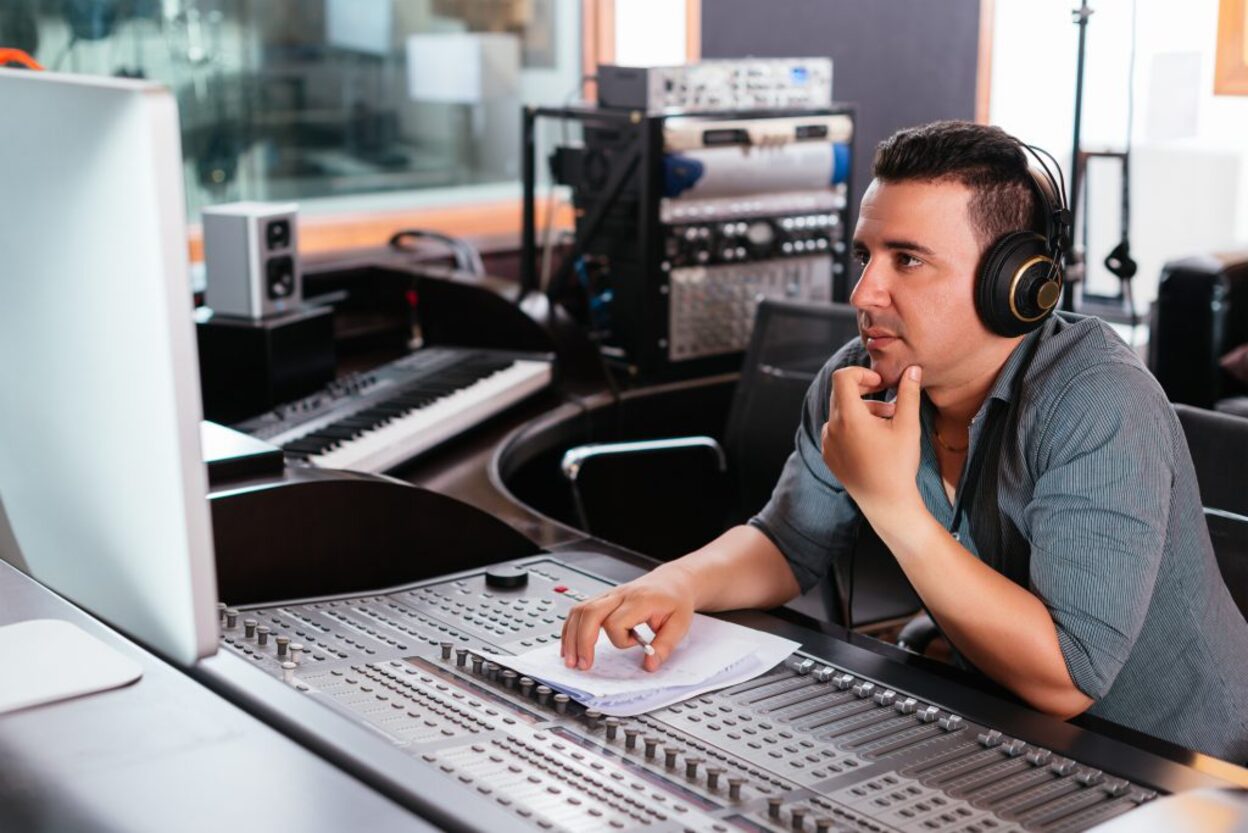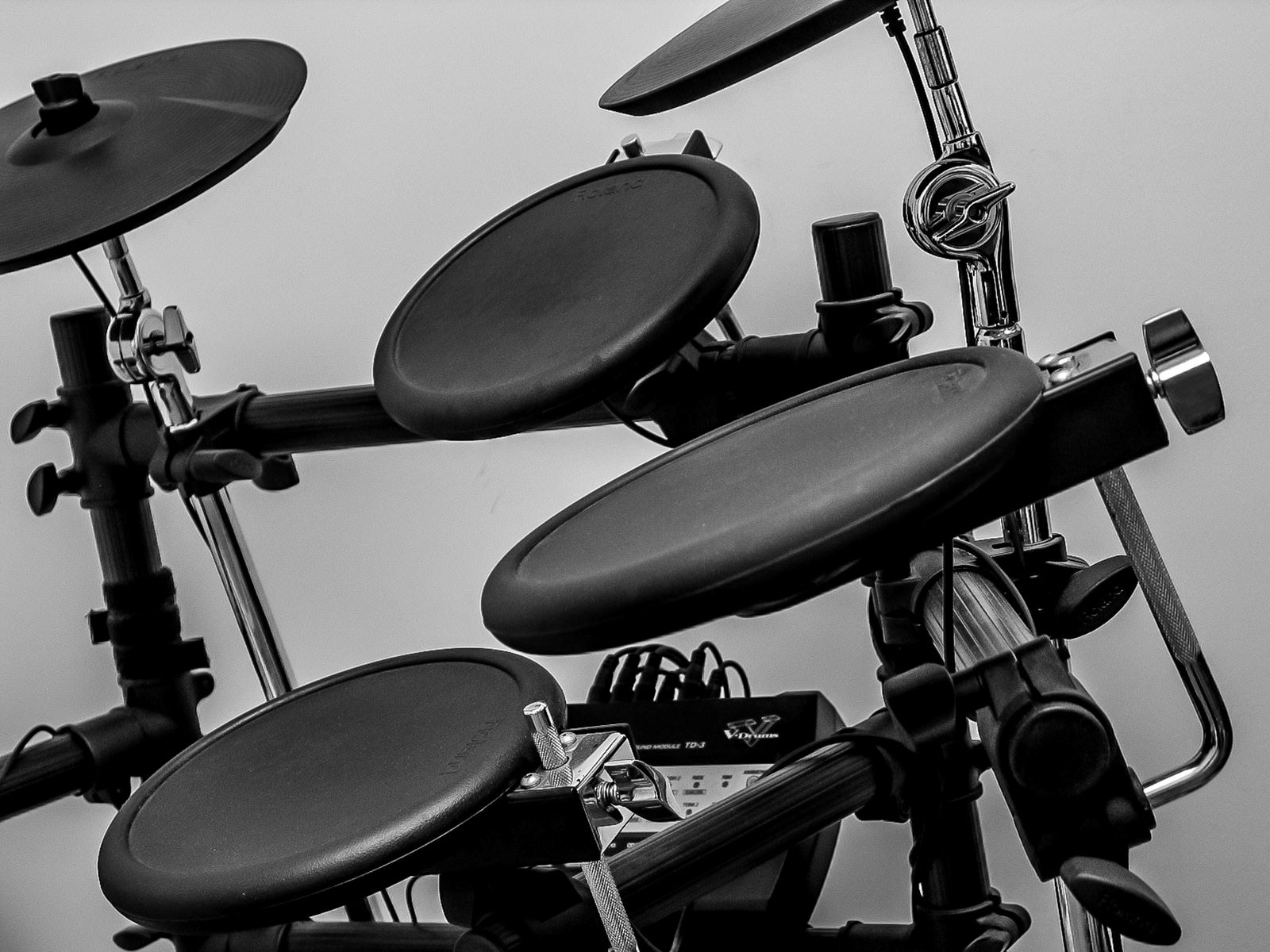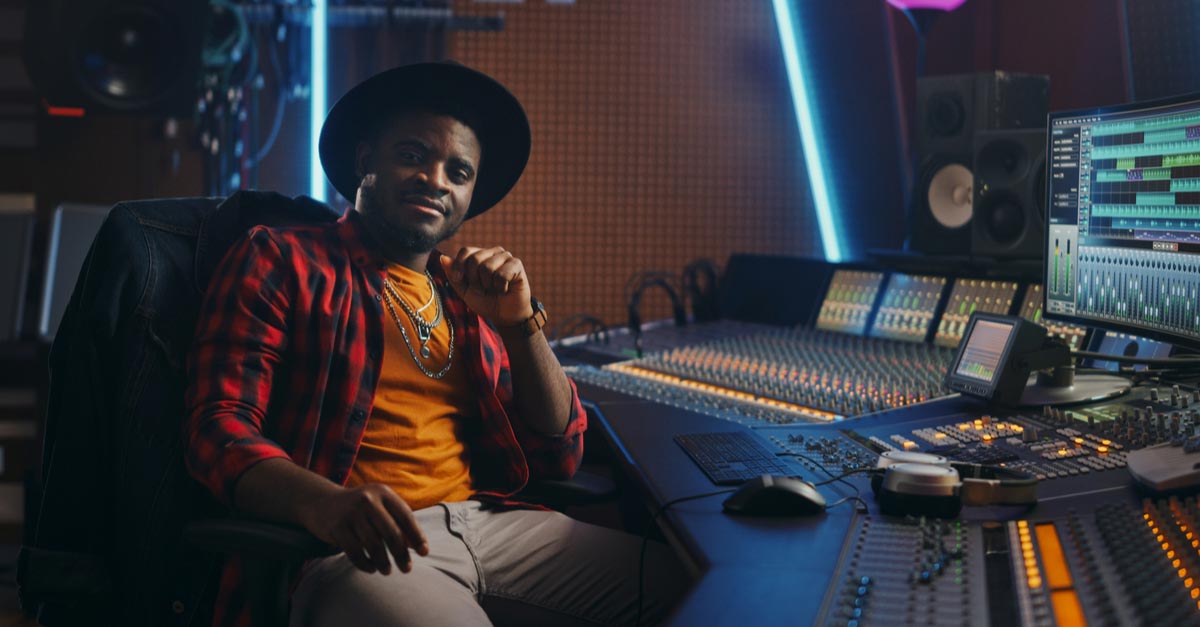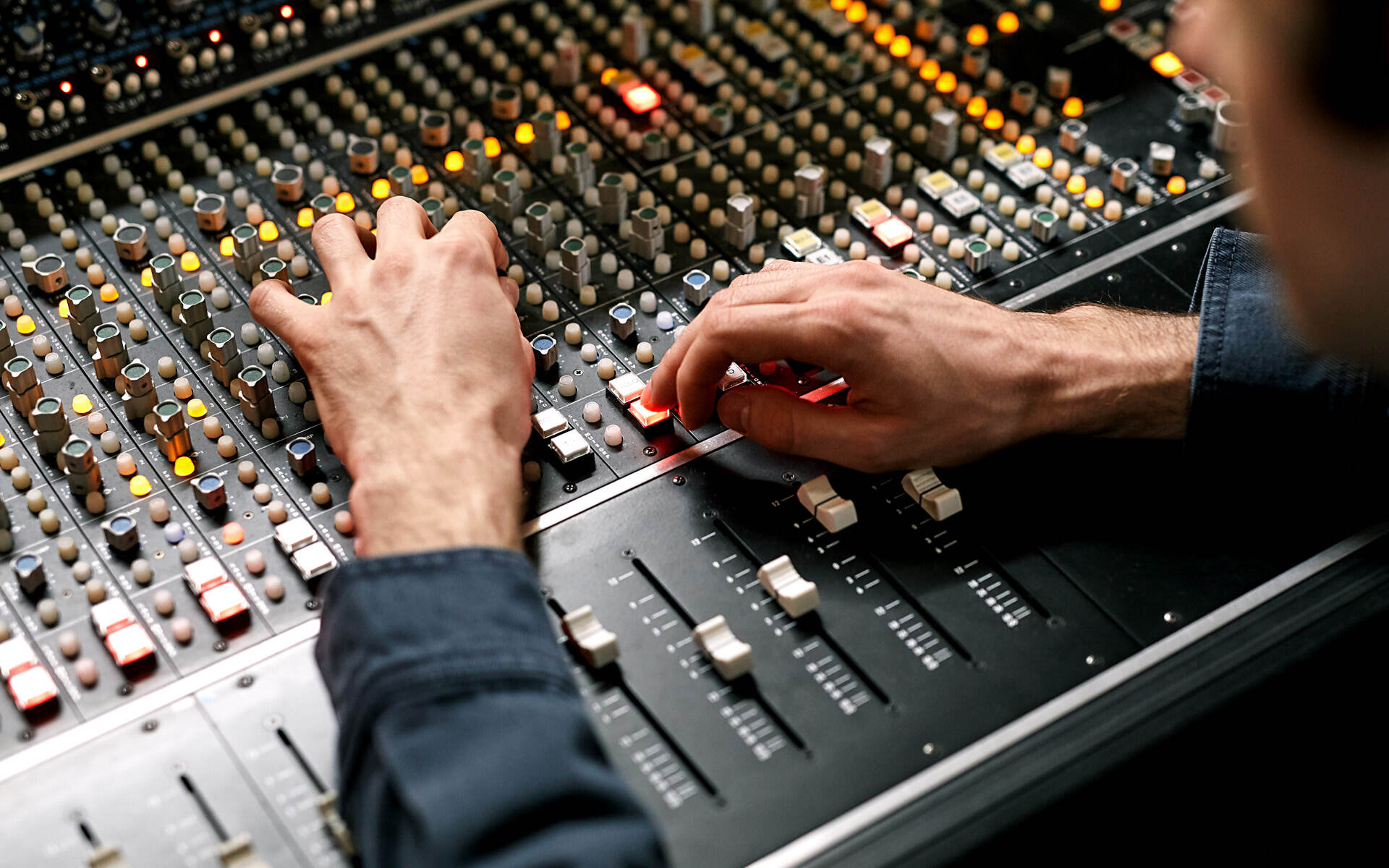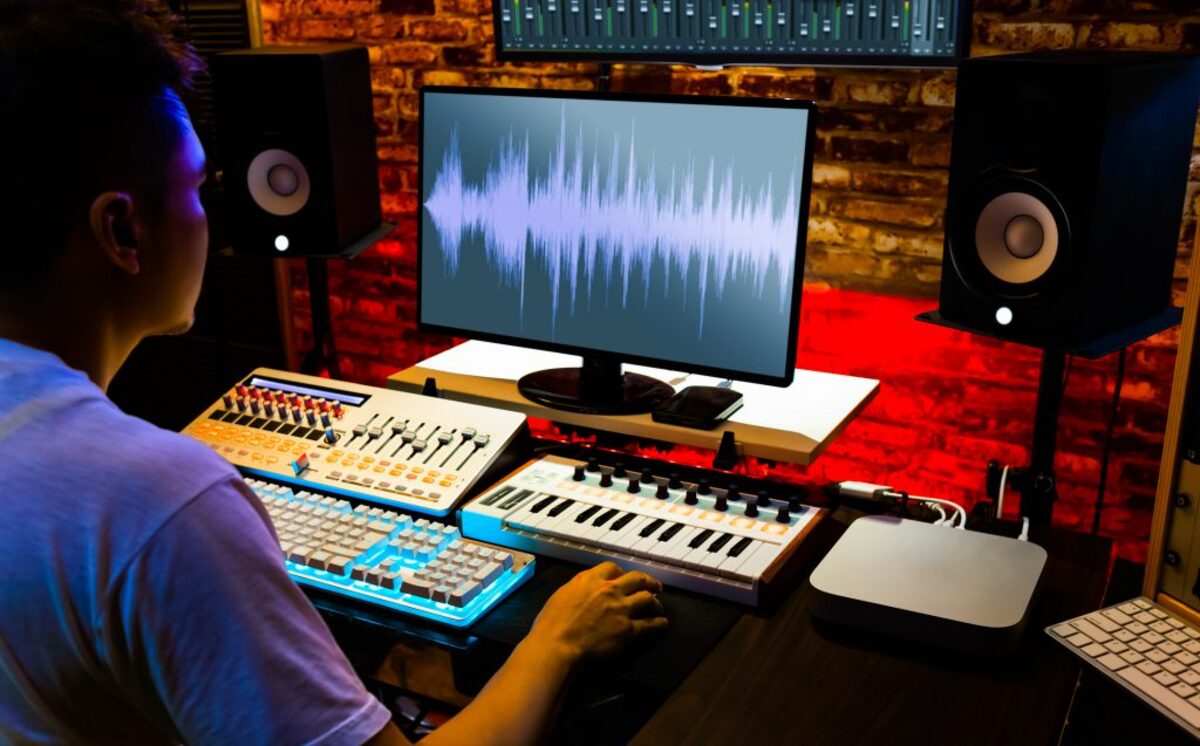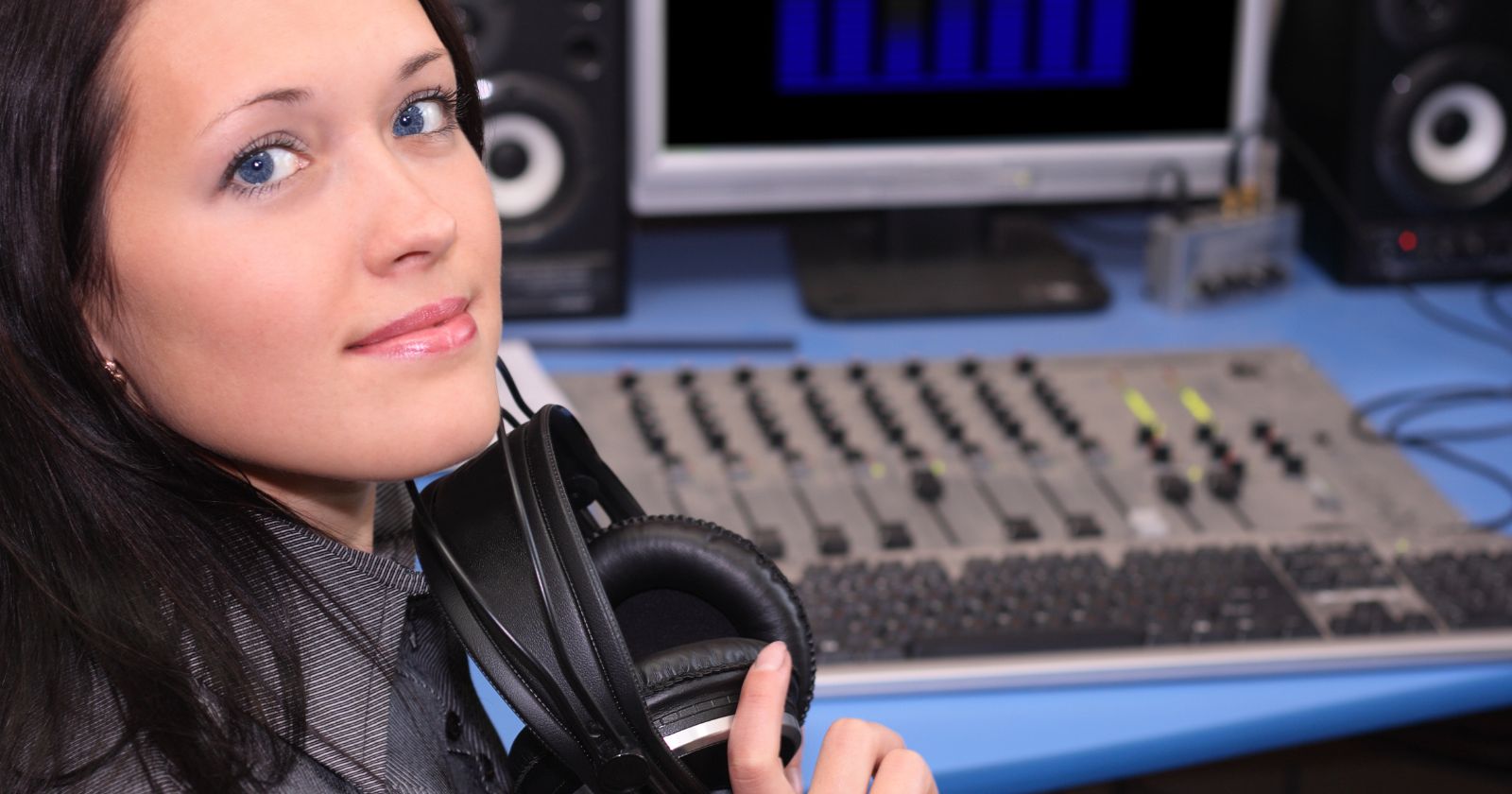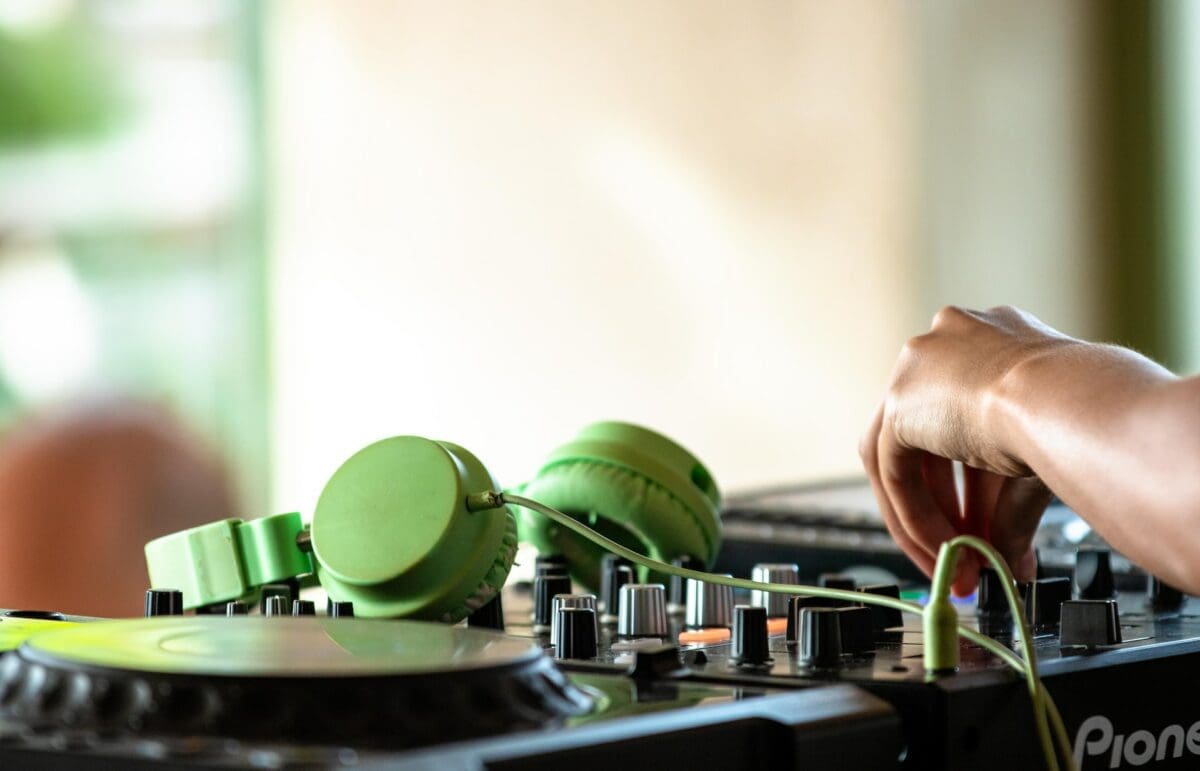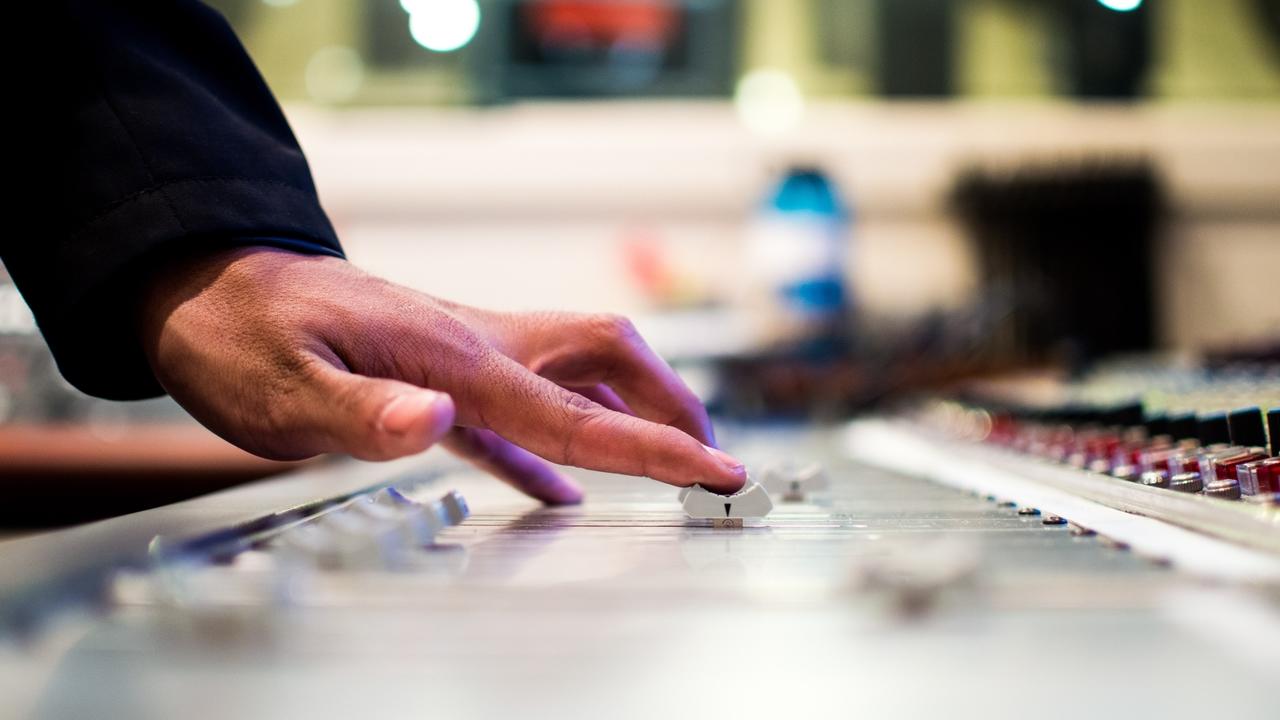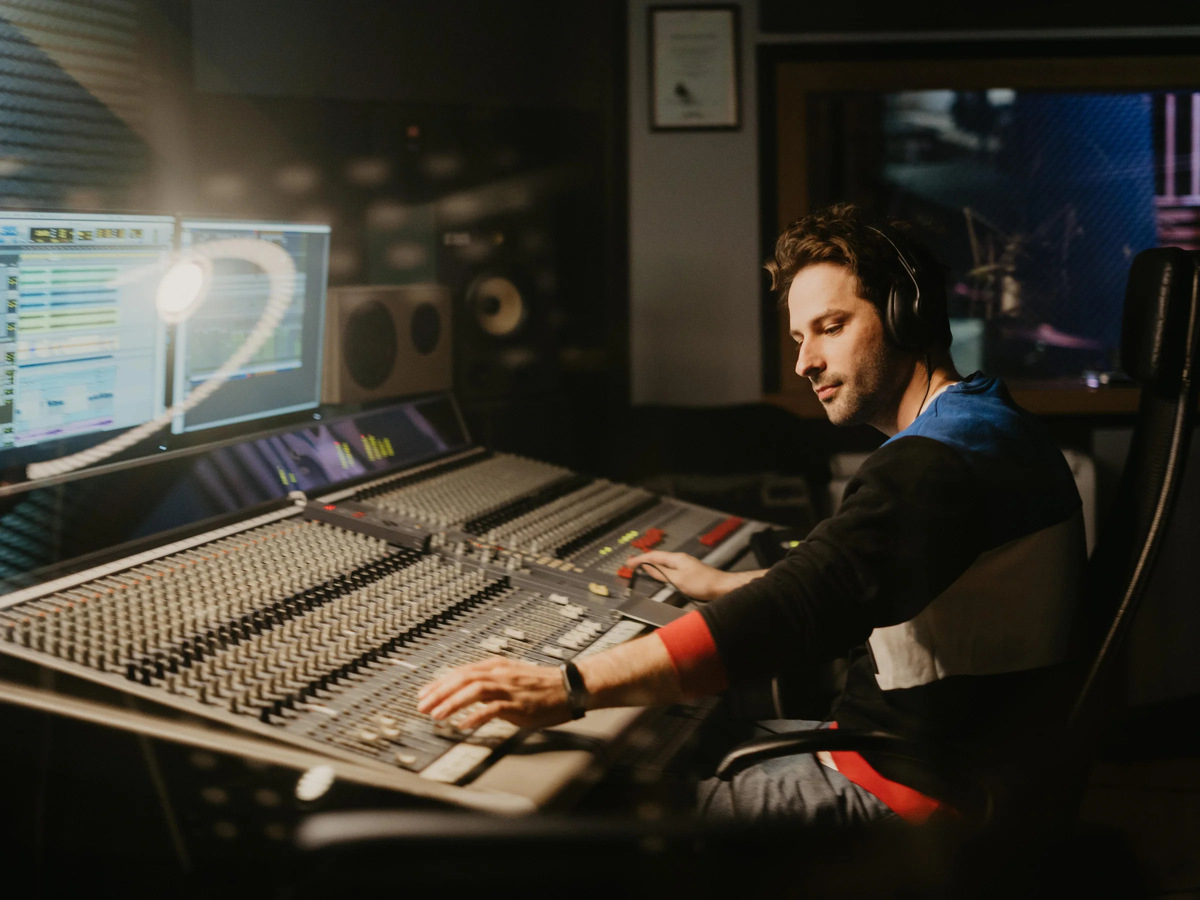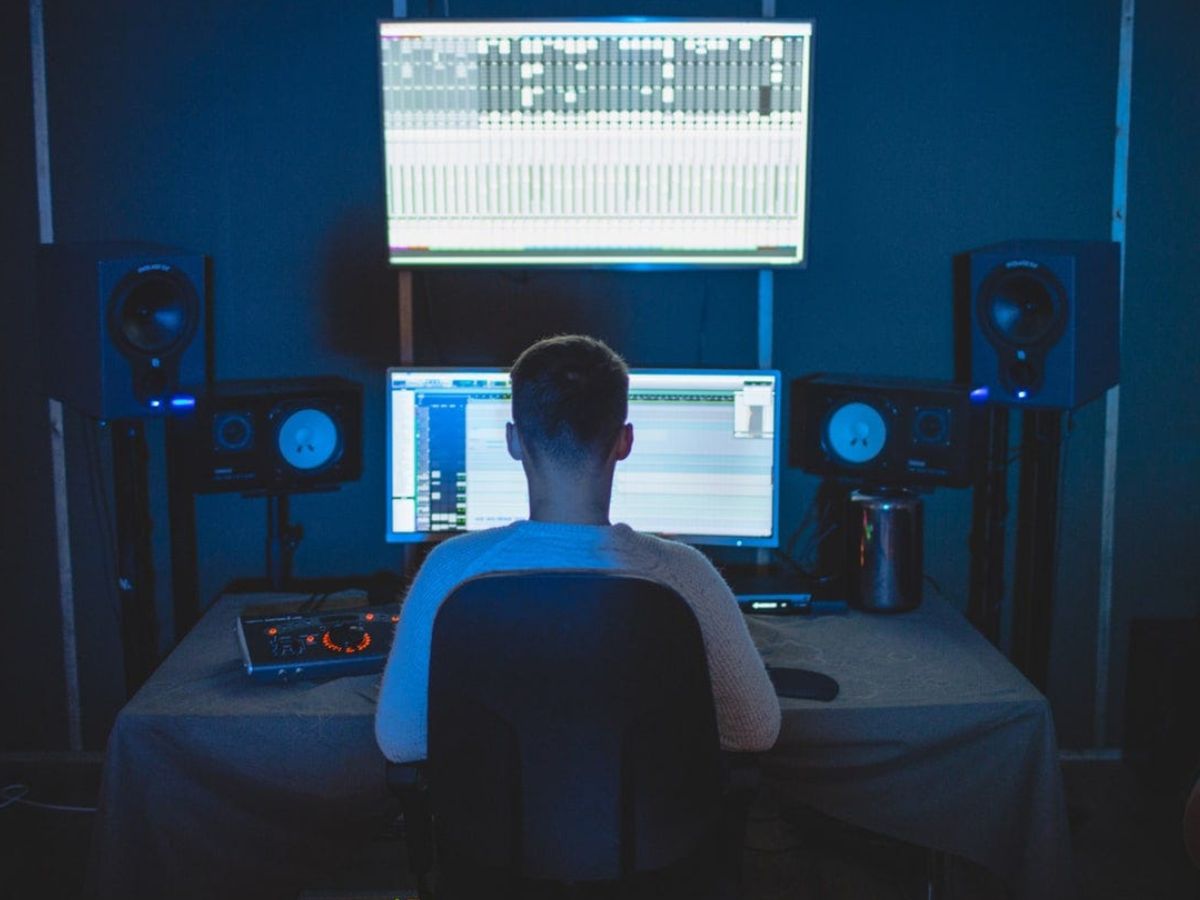Home>Production & Technology>Producer>What Is An Electronic Music Producer Supposed To Do On Stage
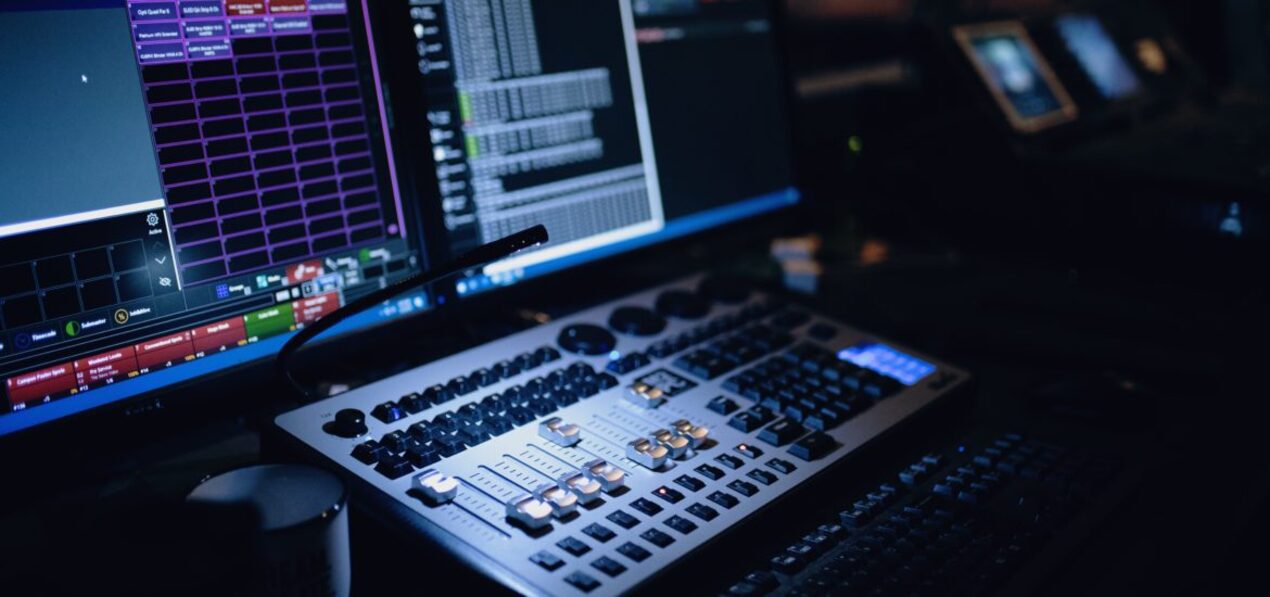

Producer
What Is An Electronic Music Producer Supposed To Do On Stage
Published: March 6, 2024
Discover the essential stage performance tips for electronic music producers. Find out how to engage the audience and elevate your live shows as a producer.
(Many of the links in this article redirect to a specific reviewed product. Your purchase of these products through affiliate links helps to generate commission for AudioLover.com, at no extra cost. Learn more)
Table of Contents
Introduction
Electronic music has evolved significantly over the years, and so has the role of the electronic music producer. With the rise of electronic dance music (EDM) and the increasing popularity of live performances, the expectations for electronic music producers on stage have undergone a transformation. In the past, the image of a producer was often confined to the studio, where they meticulously crafted tracks and albums. However, in today's music landscape, the stage has become an essential platform for these producers to showcase their talent and connect with their audience in a more direct and engaging manner.
As electronic music continues to captivate audiences worldwide, the role of the electronic music producer on stage has become increasingly prominent. These producers are not merely confined to the background, hidden behind a console or a laptop. Instead, they are now expected to deliver captivating live performances that not only showcase their musical prowess but also create a memorable experience for the audience. This shift has brought about new challenges and opportunities for electronic music producers, pushing them to explore innovative ways to engage and entertain their audience while staying true to their artistic vision.
In this article, we will delve into the dynamic world of electronic music production and explore the multifaceted role of producers on stage. We will uncover the strategies and techniques that producers employ to captivate audiences, the live elements they incorporate into their performances, and the cutting-edge technology and visuals that enhance their stage presence. By gaining insight into the evolving landscape of electronic music performance, both aspiring and established producers can glean valuable tips and inspiration to elevate their live shows and leave a lasting impression on their audience.
Understanding the Role of an Electronic Music Producer on Stage
The role of an electronic music producer on stage extends far beyond simply playing back pre-recorded tracks. It involves a dynamic blend of musical performance, creative expression, and audience engagement. Unlike traditional bands or solo artists, electronic music producers often operate in a realm where their primary instrument is a complex array of electronic hardware and software. This unique setup allows them to craft intricate soundscapes, manipulate beats, and create immersive sonic experiences in real time.
One of the key responsibilities of an electronic music producer on stage is to curate a seamless and captivating sonic journey for the audience. This involves not only selecting and mixing tracks but also incorporating live improvisation and remixing to infuse each performance with a sense of spontaneity and individuality. The ability to read the crowd and adjust the set in response to the audience's energy is a crucial skill that sets exceptional electronic music producers apart.
Furthermore, the visual aspect of the performance plays a significant role in the producer's on-stage presence. Many electronic music producers collaborate with visual artists to synchronize stunning visuals with their music, creating a multi-sensory experience that transcends traditional notions of live music performance. This integration of music and visuals adds depth and dimension to the overall presentation, elevating the audience's immersion in the performance.
In addition to crafting an engaging sonic and visual experience, electronic music producers are often tasked with creating a connection with the audience. This involves more than just delivering a set of tracks; it requires the ability to communicate emotion, energy, and a sense of shared experience with the crowd. Whether through subtle gestures, crowd interaction, or vocal encouragement, the producer's stage presence is instrumental in fostering a sense of unity and connection within the audience.
Ultimately, the role of an electronic music producer on stage is multifaceted, requiring a blend of technical proficiency, creativity, and showmanship. By mastering the art of live performance and embracing the evolving landscape of electronic music, producers can carve out a distinct and compelling presence on stage, leaving a lasting impression on their audience.
Tips for Engaging the Audience
Engaging the audience is a pivotal aspect of an electronic music producer's live performance. The ability to captivate and connect with the crowd can elevate a set from a mere musical showcase to a memorable and immersive experience. Here are several effective tips for electronic music producers to engage their audience and create a lasting impact:
1. Read the Crowd:
Understanding the audience's energy and mood is essential for tailoring the performance to resonate with the crowd. By observing the audience's response and adjusting the set accordingly, producers can create a more personalized and engaging experience.
2. Foster Interaction:
Encouraging interaction with the audience can foster a sense of community and shared experience. Simple gestures, vocal prompts, or moments of crowd participation can forge a deeper connection between the producer and the audience, enhancing the overall engagement.
3. Build Emotional Arcs:
Crafting a setlist that takes the audience on an emotional journey can significantly enhance engagement. By strategically building and releasing tension through the music, producers can create a compelling narrative that resonates with the audience on an emotional level.
4. Showcase Musical Versatility:
Demonstrating musical versatility and adaptability can captivate the audience's attention. Incorporating a diverse range of sounds, genres, and rhythms into the performance can surprise and delight the audience, keeping them engaged and eager for what comes next.
5. Embrace Spontaneity:
Introducing elements of spontaneity and improvisation can inject a sense of excitement and unpredictability into the performance. Whether through live remixing, unexpected transitions, or unique sonic manipulations, embracing spontaneity can keep the audience on the edge of their seats.
6. Connect Through Emotion:
Music has the power to evoke profound emotions, and electronic music producers can harness this power to forge a deep connection with the audience. By infusing their performance with genuine emotion and passion, producers can create a shared emotional experience that resonates with the audience long after the show.
By implementing these tips, electronic music producers can elevate their live performances and create a compelling and immersive experience for their audience. Engaging the crowd goes beyond delivering music; it involves creating a sense of unity, emotion, and shared energy that leaves a lasting impression on everyone in attendance.
Incorporating Live Elements into the Performance
In the realm of electronic music performance, the integration of live elements adds a layer of dynamism and authenticity to the producer's on-stage presentation. While electronic music is often associated with pre-programmed sequences and meticulously crafted studio productions, the inclusion of live elements introduces an element of spontaneity and organic expression that can elevate the performance to new heights.
One of the most prevalent live elements in electronic music performances is the incorporation of live instrumentation. Many electronic music producers integrate instruments such as synthesizers, drum machines, and MIDI controllers into their sets, allowing them to infuse their performance with live, tactile manipulation of sound. By playing and manipulating these instruments in real time, producers can create unique variations and improvisations, adding a sense of immediacy and individuality to their music.
Furthermore, live vocal performances have become increasingly common in electronic music sets. Producers often collaborate with vocalists to deliver live renditions of their tracks, adding a human touch to the performance and creating an intimate connection with the audience. The raw emotion and spontaneity of live vocals can imbue the music with a sense of authenticity and vulnerability, resonating deeply with the audience.
In addition to live instrumentation and vocals, the incorporation of live percussion elements can bring a visceral and rhythmic dimension to electronic music performances. Whether through the use of drum pads, electronic drum kits, or traditional acoustic percussion instruments, the addition of live percussion allows producers to craft intricate rhythms and grooves in real time, infusing the performance with energy and a palpable sense of groove.
Moreover, live sampling and looping techniques enable producers to manipulate and recontextualize sounds on the fly, creating evolving sonic textures and layers that transcend the confines of pre-recorded tracks. This live manipulation of samples and loops adds an element of surprise and innovation to the performance, as producers can spontaneously reshape and reinterpret their music in response to the energy of the crowd.
By embracing these live elements, electronic music producers can transcend the boundaries of traditional DJ sets and static performances, delivering dynamic and immersive experiences that blur the lines between studio production and live improvisation. The integration of live instrumentation, vocals, percussion, and sampling techniques empowers producers to craft truly unique and captivating performances that resonate with audiences on a profound and visceral level.
Utilizing Technology and Visuals
The integration of cutting-edge technology and visually captivating elements has become a defining feature of electronic music performances, elevating the on-stage experience to unprecedented levels of innovation and immersion. Electronic music producers harness a diverse array of technological tools and visual enhancements to create a multi-sensory spectacle that transcends traditional notions of live music performance.
One of the central components of utilizing technology in electronic music performances is the incorporation of advanced audio production and manipulation software. Producers leverage powerful digital audio workstations (DAWs) and performance-oriented software to craft intricate soundscapes, manipulate audio in real time, and seamlessly transition between tracks and sonic elements. These software tools empower producers to exercise precise control over every sonic nuance, from sculpting sounds to creating immersive spatial effects, resulting in a sonic tapestry that captivates the audience and transports them into a mesmerizing sonic realm.
In addition to software-based tools, hardware controllers and performance instruments play a pivotal role in shaping the on-stage experience. MIDI controllers, synthesizers, drum machines, and other electronic instruments serve as tactile interfaces through which producers can interact with their music in a physical and expressive manner. The integration of these performance instruments enables producers to infuse their sets with live manipulation, improvisation, and sonic experimentation, fostering a dynamic and engaging performance that blurs the line between studio production and live expression.
Furthermore, the visual component of electronic music performances has evolved into an essential facet of the overall presentation. Visual artists collaborate with producers to create stunning visual accompaniments that synchronize with the music, enhancing the audience's visual and emotional engagement. From intricately choreographed light shows to mesmerizing projection mapping and immersive multimedia displays, the visual elements of electronic music performances serve to augment the sonic experience, creating a multi-dimensional journey that stimulates the senses and transcends traditional boundaries of live music presentation.
Advancements in lighting technology have also revolutionized the visual landscape of electronic music performances. Producers and lighting designers utilize state-of-the-art lighting fixtures, LED displays, and visual effects to craft dynamic and immersive lighting environments that complement the music and amplify the audience's emotional connection to the performance. The interplay of light and sound creates a synesthetic experience, where the visual and sonic elements converge to envelop the audience in a captivating and transformative audiovisual experience.
By leveraging technology and visuals in this manner, electronic music producers can transcend the confines of traditional performance paradigms, delivering immersive and multi-sensory experiences that resonate with audiences on a profound and visceral level. The seamless integration of advanced audio production tools, performance instruments, and visually captivating elements empowers producers to craft transcendent live performances that push the boundaries of artistic expression and leave an indelible impression on their audience.
Conclusion
In conclusion, the role of an electronic music producer on stage has evolved into a multifaceted and dynamic endeavor that extends far beyond traditional notions of live music performance. As the electronic music landscape continues to flourish, producers are faced with the exciting challenge of creating captivating and immersive experiences for their audience. By embracing live elements, harnessing cutting-edge technology, and fostering genuine connections with their audience, electronic music producers have the opportunity to redefine the boundaries of live performance and leave a lasting impact on the global music scene.
The art of engaging the audience through live performance goes beyond the mere delivery of music; it involves creating a shared emotional journey that resonates deeply with the crowd. Through strategic improvisation, crowd interaction, and the seamless integration of live elements, producers can craft performances that transcend the realm of traditional DJ sets, immersing the audience in a dynamic and spontaneous sonic experience.
The incorporation of live elements, including instrumentation, vocals, percussion, and sampling techniques, empowers producers to infuse their performances with a sense of immediacy, authenticity, and artistic expression. By embracing live improvisation and tactile manipulation of sound, producers can create unique and compelling performances that blur the lines between studio production and live expression, captivating audiences with their creativity and spontaneity.
Furthermore, the integration of advanced technology and visually captivating elements has elevated the on-stage experience to unprecedented levels of innovation and immersion. Through the seamless interplay of cutting-edge audio production tools, performance instruments, and mesmerizing visual accompaniments, electronic music producers can craft multi-sensory spectacles that transcend traditional notions of live music presentation, captivating audiences with a mesmerizing fusion of sound and visuals.
As electronic music continues to captivate audiences worldwide, the role of the electronic music producer on stage stands as a testament to the transformative power of live performance. By embracing creativity, innovation, and a deep connection with their audience, electronic music producers have the opportunity to shape the future of live music and inspire a new generation of performers and music enthusiasts.
In essence, the stage has become a canvas for electronic music producers to weave intricate sonic tapestries, forge emotional connections, and create transcendent experiences that resonate with audiences on a profound and visceral level. As the electronic music landscape continues to evolve, the role of the producer on stage will undoubtedly remain at the forefront of innovation and artistic expression, driving the continual evolution of live music performance and leaving an indelible mark on the global music community.

